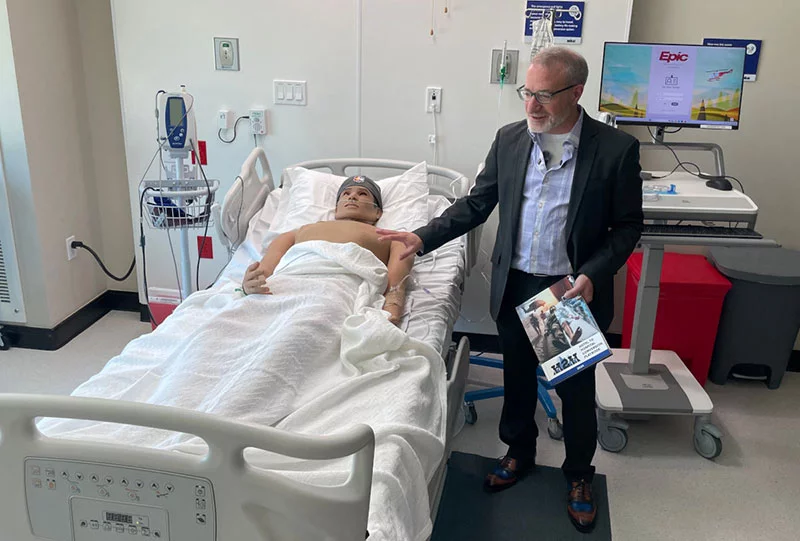
For two weeks in late July, the Hyatt Regency Aurora-Denver Conference Center across Colfax Avenue from the Anschutz Medical Campus boasted, in addition to its usual amenities (lobby with fireplace, outdoor pool, café), two intensive care units, a radiology suite, a fully secured medication room, a nurse station, and patient rooms.
All that — plus wiring for computers and medical equipment; new pipes for electrical conduit, oxygen, and medical vacuum lines; floor coverings laid over hotel carpeting; walls cut away to turn three hotel rooms into a single four-bed ICU; and much more — had been assembled in less than two weeks.
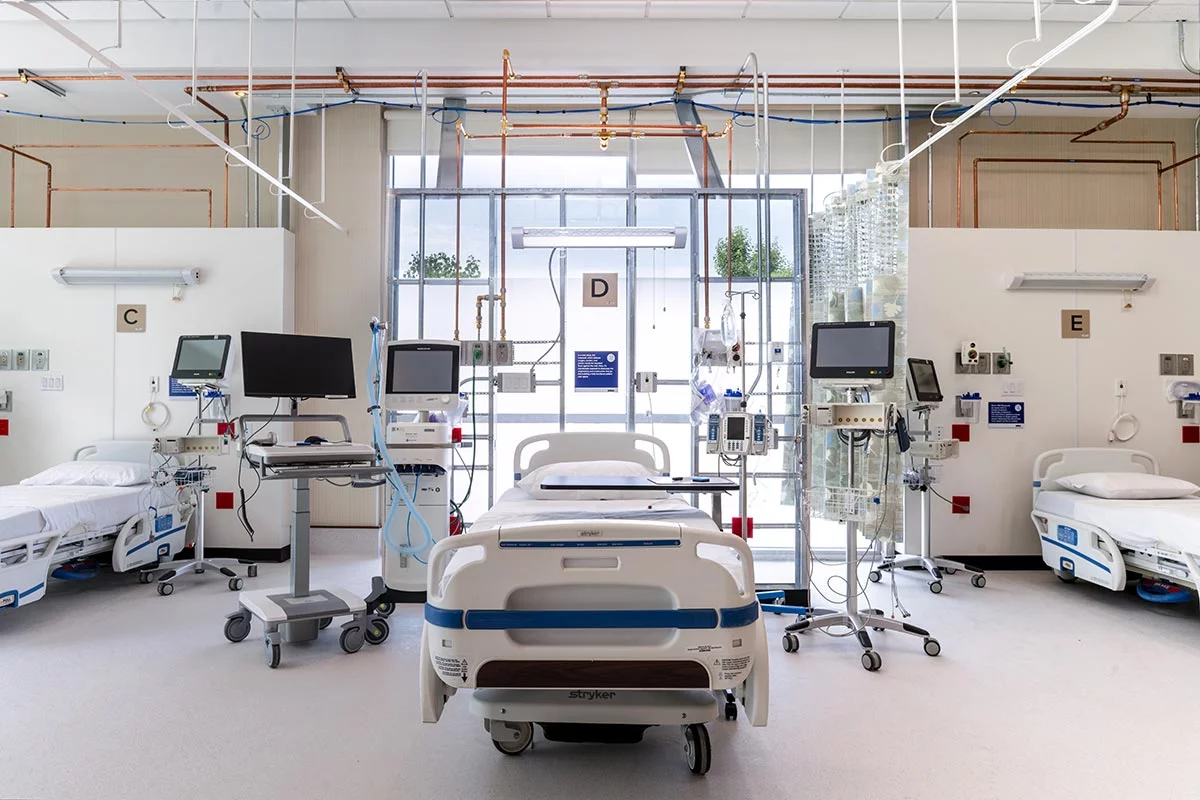
Two weeks later, this impromptu hospital a stone’s throw from the 678-bed UCHealth University of Colorado Hospital would be gone. And that was the point.
In 2023, a University of Colorado School of Medicine team accepted a $12.5 million grant and a big challenge from U.S. Department of Defense. Imagine an overseas conflict that pours 1,000 wounded service members back to U.S. shores every day for 100 days. Hospitals across America would be swamped within days. How might temporary hospital capacity in the many hotels near major medical centers fill the gap?
Enough lessons to fill a book
For 18 months, the Hotel2Hospital project’s hundred-plus team members — including many UCHealth staff members — worked that problem. Year one brought enough insights about the physical, logistical, technological, and bureaucratic hurdles to fill a book. Year two’s culmination was this demonstration at the Hyatt — and another, yet-to-be published book.
In year three, which commences in September, the team will help other major healthcare systems test Hotel2Hospital’s approach in different jurisdictions with different hotels and different regulatory and public-safety landscapes. They’ll also develop a curriculum for those who want to employ this solution in their community.
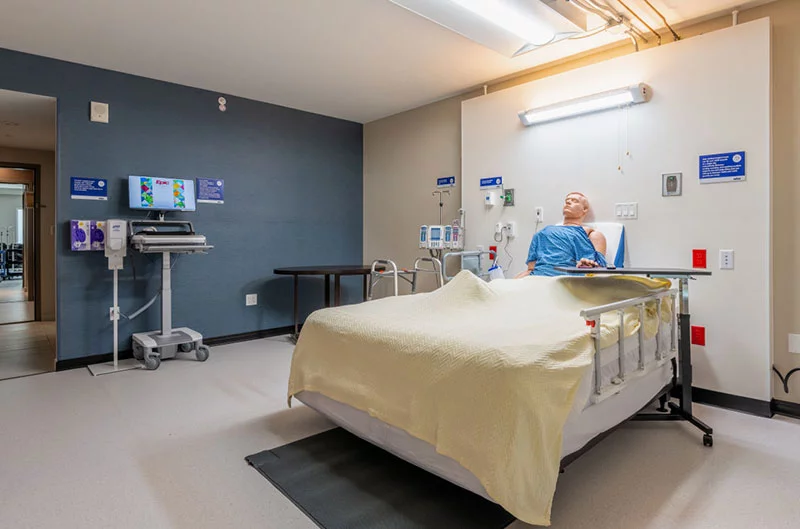
May the need never arise. But if it should, the work done here in Colorado could save many lives around the country, says Dr. Jason Persoff, a UCHealth emergency medicine specialist and an associate professor at the University of Colorado School of Medicine. Persoff is leading the Hotel2Hospital project with fellow emergency medicine specialist, Dr. Charles Little. Temporary hotel conversions have several advantages over tents, conference centers, and the usual emergency-overflow hospital space, said Little, who is also a professor at the University of Colorado School of Medicine.
Hotels have their advantages as emergency hospitals
With tents, it’s hard to maintain comfortable temperatures. Bathrooms and showers are distant and difficult to access, particularly for patients with mobility problems. Tents are noisy. There’s no privacy; there’s always light; the beds are often cots and therefore uncomfortable; infection control and stopping the spread of communicable disease are challenges. On the infrastructure side, it’s hard to bring in hospital-grade IT and patient-related infrastructure such as electrical, oxygen and medical vacuum. And the tents often end up in parking lots that can displace staff and patients in already-packed hospitals during emergencies.
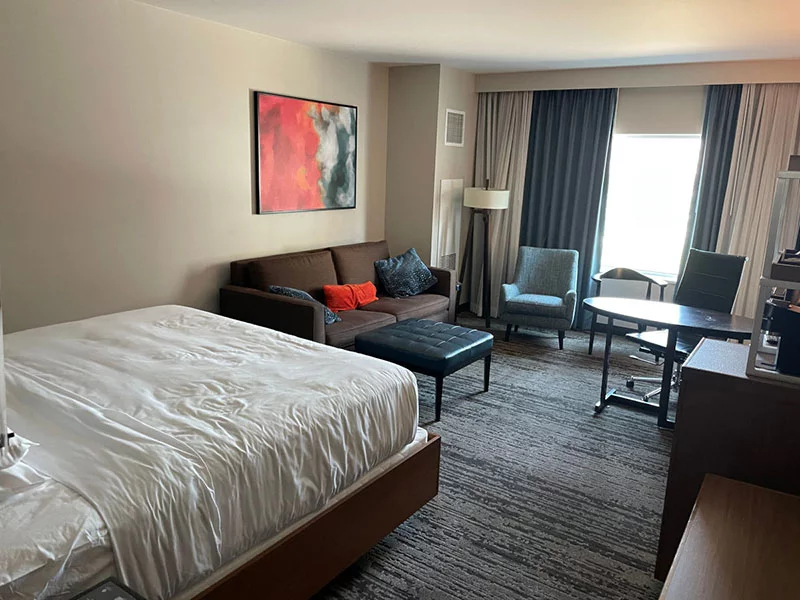
Conference centers and similar have good temperature control and avoid the parking problem, but share many of the other issues, Persoff says. What’s more, there’s a potential business case for hotels. In a national emergency such as the scenario Defense officials presented, there would likely be much less personal and business travel happening and a lot of empty hotel rooms as a result. Compensating a hotel for turning itself into a temporary 125- to 150-bed hospital would help keep it afloat – and keep hotel staff employed, too.
But that transition takes enormous planning and skillful execution on many fronts, as a walk through the Hyatt’s hospital demonstration shows. A Hyatt conference room became the five-patient “Level 1 ICU 104.” The carpets had been covered with a layer of vinyl. Tracks for privacy curtains hung from high ceilings. Blue Ethernet cabling bound together with Velcro straps hung in the rafters with a variety of new power conduit and copper pipes and hoses for oxygen and medical vacuum.
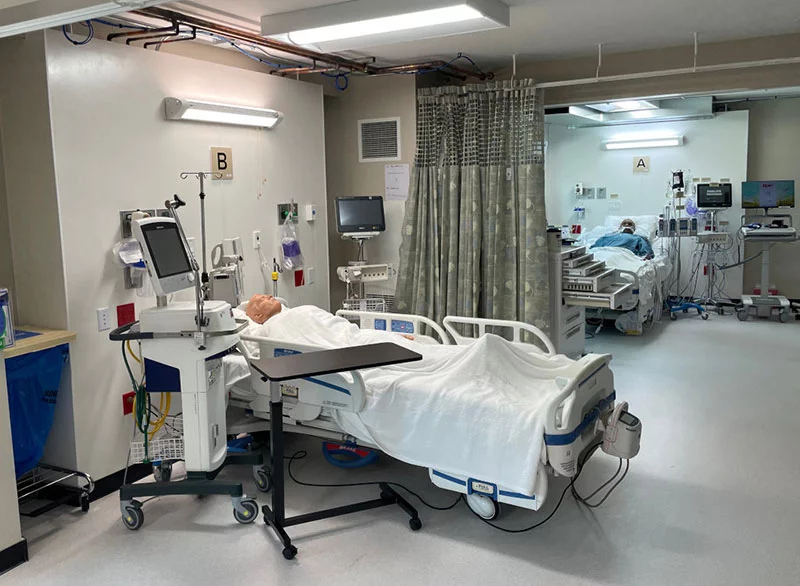
Headwalls at the heart of the hotel-to-hospital conversion
Ryan Schultz, the CU School of Medicine’s program manager on the project, noted the differences in the pipes and fittings they tested as they learned what could be done fastest. For long runs, they’d use copper-lined hoses; pressure fitting work best in hallways, and old-school soldering and braising works as you get closer to headwalls, he said.
Headwalls were the key element in the conversion. These would be prebuilt, placed in front of standard hospital walls, and connected to the above pipes as well electrical and data lines. The headwalls mimic what’s behind a hospital bed in an ICU or patient room, so they have ports for oxygen, suction, and power, plus nurse call buttons and power for mobile workstations and IV-pole medication dispensers.
Upstairs on the second floor, the Hotel2Hospital team’s collaboration of doctors, nurses, architects, engineers, IT professionals, a construction team led by GH Phipps Construction, procurement experts, UCHealth managers, emergency-management consultants from All Clear Emergency Management Group, and others reconceived several rooms along a stretch of hallway with vinyl floors and new copper piping and steel conduit running much of its length.
The medication room, complete with metal-mesh window protection per Colorado health department regulations, has a full workstation for printing orders and a Pyxis machine for automated medication dispensing. The adjacent laboratory has capabilities for several blood and urine tests. (For more complex needs, a courier would bring samples to the UCHealth University of Colorado Hospital’s clinical lab on at least an hourly basis.)
The radiology suite has a 1,100-pound portable X-ray machine, an ultrasound machine, and a PACS system to capture and display medical images. Patient rooms retain the hotel room’s table and chairs, bureau, and TV, but add headwalls and vinyl flooring. The team showed that a hotel bed can work as a hospital bed with some adaptations – and also that hospital beds can work in a converted hotel room.
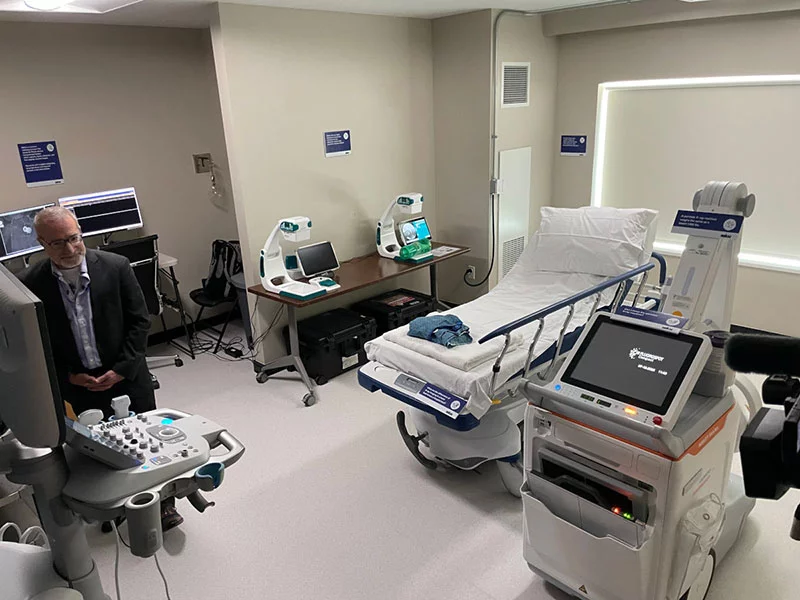
IT integration was the hardest part
The Hotel2Hospital team knocked out walls separating three hotel rooms to create a four-bed ICU upstairs. It has telehealth and UCHealth Virtual Health Center patient-monitoring connectivity afforded by industrial-grade mesh Wi-Fi and a Starlink satellite-internet terminal on the roof.
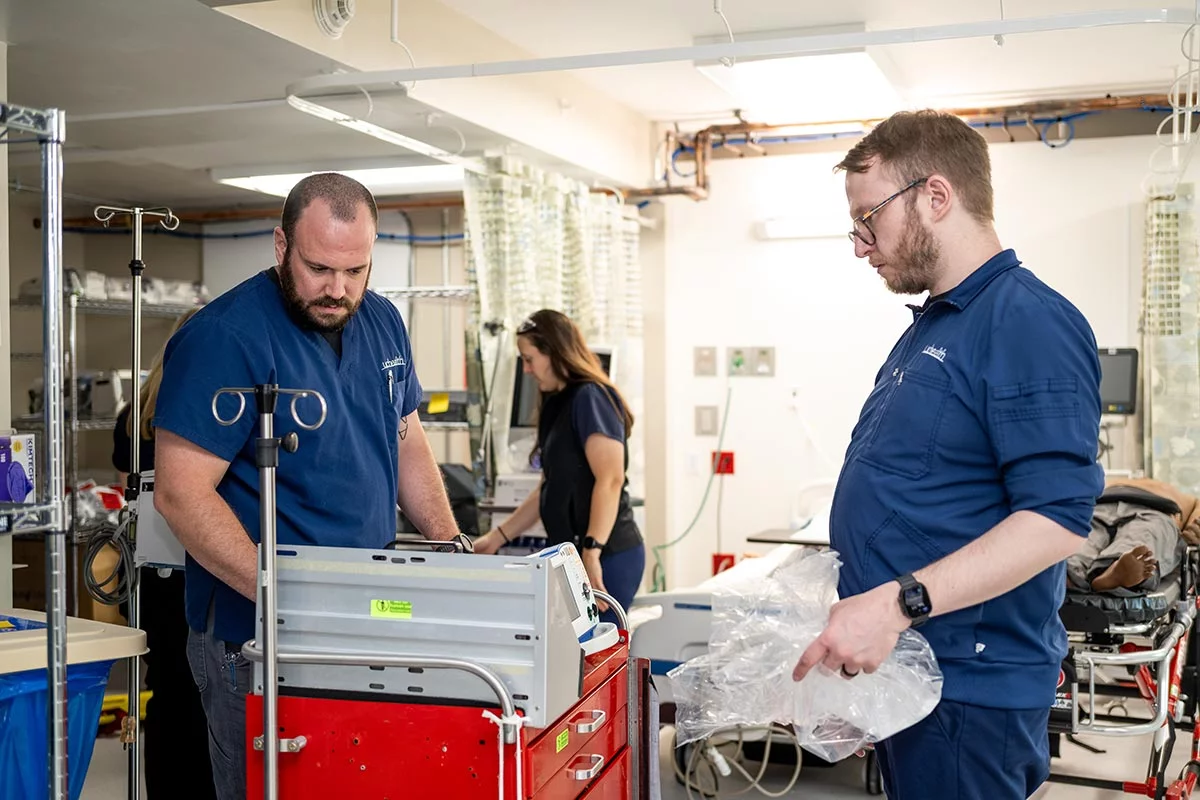
All the Hotel2Hospital systems are integrated with UCHealth’s Epic electronic health record to ensure continuity of care. That and other computer-related wrinkles made IT integration the toughest part of the effort, Persoff says. Also challenging, he says, was understanding and satisfying various regulatory mandates, ranging from fire code and safety rules to state health department and city of Aurora requirements.
To make sure it all came together, the team simulated cardiac arrests, sepsis alerts, staff emergencies, behavioral emergencies, and evacuations. It all worked, though with pressurized air substituting for oxygen, because you can’t pipe oxygen without a special license or an emergency declaration, Persoff said.
““It has been a research project for sure,” he said.
While this hospital in a hotel will soon be gone, the hard-earned lessons from what Persoff described as “a high-performing team, all moving in the same direction” will live on – and, perhaps, in a time of dire need, provide emergency care for many thousands of people.
